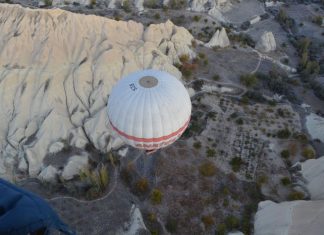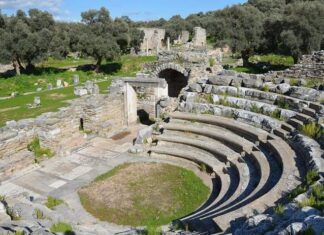Strict Rules for Visiting the Treasury
In Constantinople, ordinary people are not allowed to enter the Sultan's treasury. Only the families of foreign diplomats may be allowed to visit. No...
Fire and Neglect in the Ancient Buildings
In August 1863, a fire destroyed or badly damaged many of the ancient buildings. Today, most of these buildings look old and worn. Their...
Facing the Dogs
With little belief that it would work, but with the quickness of a man in a comic opera, I sat down. Just in case...
A Day in the Bazaar
One day, I walk by the bazaar without going in. The next day, I stroll along with a friend. We pass the store, and...
The Road to Ochrida
The road we traveled was clear and easy to follow. It curved around long hills that had no trees. Goatherds, people living a simple...
Kirk Kilise Wine and Its Secret
The wine from Kirk Kilise is very good. However, most Turks don’t drink wine—they are mostly teetotalers. So, the wine is taken to the...
The Dreary Landscape
The sky was gray, and the wind howled. The land looked dull and lifeless. The Turkish villages were messy, made up of mud huts....
Talking with the Vali
We talked about many different things. Every once in a while, a general or colonel was called over to join the conversation. However, as soon as they had said their part, they stepped back. In the nearby woods, a band played music, and throughout the meeting, refreshments were offered: cigarettes and coffee, cigarettes and ice cream, cigarettes and caramels, cigarettes and grapes — and then, more cigarettes.
Princes’ Islands Tranquil Retreat near Constantinople
Moda Burnu, the protruding promontory nestled between two bays, is a favored residence for the British colony in Constantinople. Offering a breathtaking panorama of...
Rafting in Turkey
Challenges and Opportunities
Importance of Rafting in Turkish Tourism
Rafting holds a significant place in Turkish tourism, providing visitors with a unique and original experience. This...













